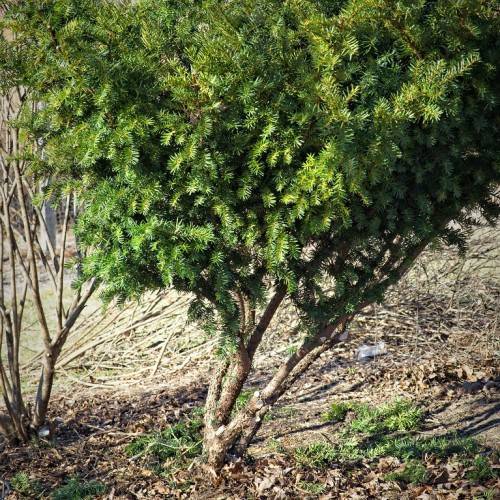
English yew
Taxus baccata
Cycle:
Perennial
Watering:
Average
Hardiness Zone:
6 - 7
Flowers:
Flowers
Sun:
Full sun,part shade
Soil:
Acidic, Alkaline, Well-drained
Fruits:
Fruits Ready In Fall
Leaf:
Yes
Growth Rate:
Low
Maintenance:
Low
Poisonous To Humans:
Yes
Poisonous To Pets:
Yes
Drought Tolerant:
Yes
Thorny:
Yes
Care Level:
Medium
watering
English yews should be watered regularly during the active growing season (spring through fall). Water deeply twice per week, making sure to completely saturate the root zone. During each watering, allow the soil to become moderately moist, and then allow it to dry slightly until the next watering. This will help promote healthy root growth and prevent fungal and bacterial diseases. During the winter, reduce watering drastically. The yew will do best if allowed to dry out a bit between waterings. When temperatures begin to warm in spring, gradually resume full watering.
sunlight
English Yews require full sun to partial shade for optimal growth. While amount of sunlight requirement depends on where the plant is growing, the species generally performs best in sunny spots with few hours of shade. Plants grown in partial shade should have minimal amounts of direct sunlight during the hottest times of the day. In temperate climates, English Yews can tolerate full sun exposure, but in hotter climates, they should have some shade from late morning through early afternoon to protect them from the hottest temperatures. English Yews should have exposure to sunlight for at least 4 hours each day.
pruning
English yew (Taxus baccata) can be pruned at any time of year. However, for the best results and to reduce stress on the plants, the best time to prune English yew is between late winter and early spring before new growth begins. Prune all dead, crowded, or diseased branches first. Then remove branches that are crossing over each other or competing for sunlight, nutrients, and space. Pruning of English yew can also be used to encourage the growth of new, healthy branches and to keep the tree in its desired shape. To do this, remove any branches that are interfering with the desired shape of the tree and encourage the growth of younger branches. When pruning, take care to ensure that multiple branches are not removed near the same spot as this can lead to dieback. In general, 10-20% of the foliage should be removed each year and pruning should never be done too drastically.
